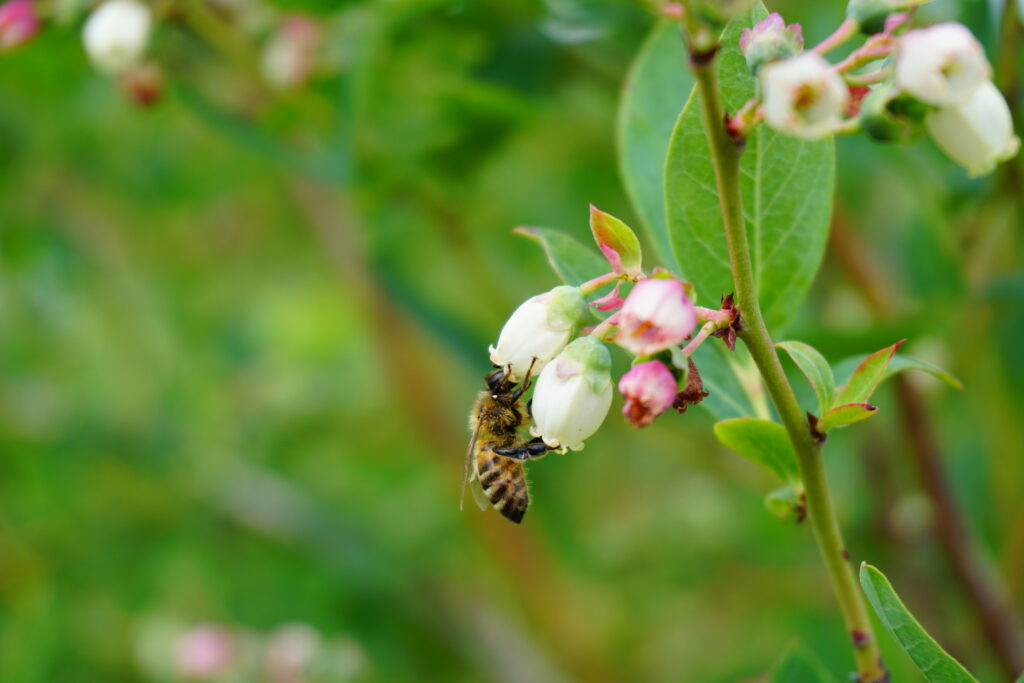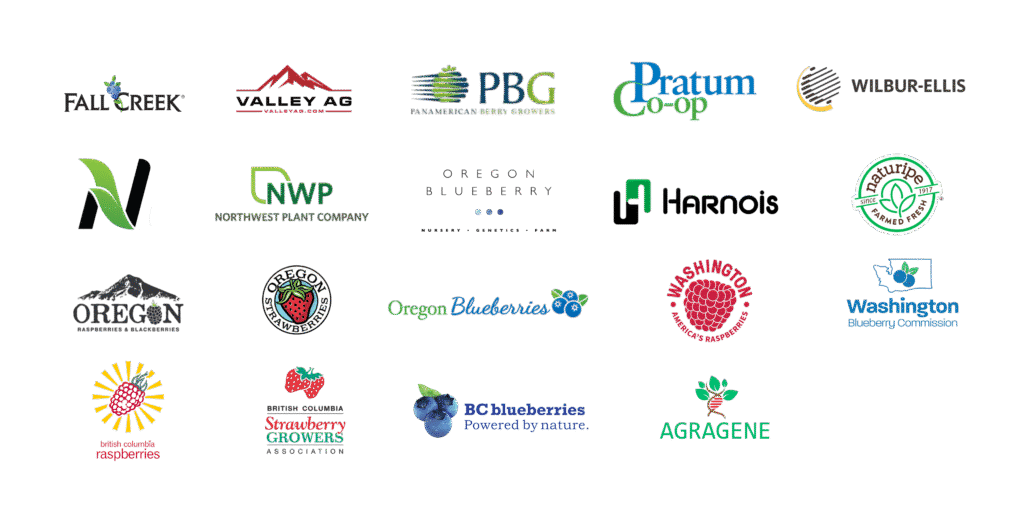
Wei Yang, OSU Blueberry Extension Agent
Currently, all blueberry cultivars in the Willamette Valley are in full bloom. However, the upcoming weather forecast indicates high temperatures in the coming days. Bees are actively engaged in pollination, ensuring the transfer of pollen from the stigmas to fertilize the ovules and promote fruit set. To achieve optimal fruit set, specific conditions must be met, including temperatures ranging from 65-85°F.
However, Oregon is anticipating a heatwave, with temperatures expected to reach the high 80s and potentially surpass 90°F. In blueberry fields covered with black weed fabric, temperatures can rise even further, posing a significant risk of disrupting pollen germination and growth.
To minimize the heat’s impact on blueberry fields, it is advisable to utilize evaporative cooling techniques like implementing overhead irrigation and/or micro sprinklers prior to temperatures surpassing the high 80s. Based on Dr. Bryla’s field study, it has been shown that misting the bushes with micro sprinklers for 15 minutes every hour during the peak heat of the day can efficiently reduce temperatures by over 10°F. This approach should be applied for a few hours in the afternoon to maintain field temperatures below 85°F if possible.
It’s important to note that overhead irrigation may briefly disturb bee activity and increase the potential for anthracnose infection. For fields with a history of anthracnose disease, a post-heatwave fungicide spray may be necessary to mitigate the associated risks.
Questions? Email Wei Yang or join the conversation here.


We have organized our mailing list to better serve our audience. Subscribe to receive exclusive updates from our weekly SFU newsletter or join our communications list for industry news, our events, forum alerts, and more. No spam. Just updates.